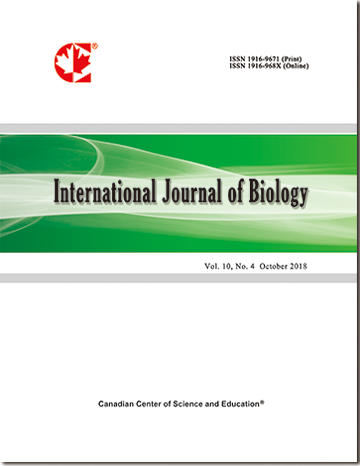Impact of New Natural Biostimulants on Increasing Synthesis in Plant Cells of Small Regulatory si/miRNA With High Anti-Nematodic Activity
- Victoria Tsygankova
- Galyna Iutynska
- Anatoliy Galkin
- Yaroslav Blume
Abstract
Plant endoparasitic cyst nematode Heterodera schachtii Schmidt, gallic nematode Meloidogyne incognita and stem nematode Ditylenchus destructor damage various agricultural crops. The application of ecologically safe natural biostimulants with bioprotective properties is a newer approach for increasing plant resistance to parasitic nematodes. The molecular-genetic analysis of biostimulants action on plant genome is necessary for creation of new effective bioregulators for plant protection against phytopathogenic organisms. In our field and greenhouse experiments, we investigated the influence of new natural biostimulants Avercom and its derivatives on plant protection against nematodes Meloidogyne incognita and Ditylenchus destructor. Considerable increase of resistance to nematodes and productivity of cucumber and potato were observed for plants treated by biostimulant Avercom and its derivatives. Impact of biostimulants Radostim-super and Avercom on increase of resistance of sugar beet and cucumber sprouts to nematodes Heterodera schachtii and Meloidogyne incognita was studied in the laboratory conditions. Comparative analysis of morpho-physiological signs of control and experimental plants showed that plants treated by Radostim-super and Avercom were more viable and resistant to these nematodes as compared to control sprouts. In the molecular-genetic experiments, we studied the impact of these biostimulants on inducing synthesis of small regulatory si/miRNA, which plays key role in plant immune protection. Using method Dot-blot hybridization we studied degree of homology between si/miRNA with mRNA populations, isolated from plants untreated and treated with new natural biostimulants. We found considerable difference in the degree of homology (6-28%) between populations of mRNA and si/miRNA from nematode-infected plants that were either untreated or treated with biostimulants. We have also investigated silencing of translation of mRNA activity of si/miRNA in the wheat embryo cell-free system of protein synthesis. In these experiments, we found high inhibitory activity (38-65%) of si/miRNA from plants treated by biostimulants as compared to low inhibitory activity (15-20%) of si/miRNA from untreated plants. Obtained differences in the degree of homology between populations of mRNA and si/miRNA from untreated and treated with biostimulants plants, which were infected by nematode, and also the high inhibitory activity of si/miRNA from plants treated by biostimulants confirm that these biostimulants induce synthesis of anti-nematodic si/miRNA in plants, resulting in considerable increase of their resistance to these phytopathogens.
- Full Text:
 PDF
PDF
- DOI:10.5539/ijb.v6n1p48
Journal Metrics
h-index (December 2021 ): 37
i10-index (December 2021 ): 149
h5-index (December 2021 ): N/A
h5-median (December 2021 ): N/A
Index
- ACNP
- AGRICOLA
- BASE (Bielefeld Academic Search Engine)
- CAB Abstracts
- CiteFactor
- CNKI Scholar
- CrossRef
- DTU Library
- Elektronische Zeitschriftenbibliothek (EZB)
- Excellence in Research for Australia (ERA)
- Google Scholar
- Infotrieve
- LIVIVO (ZB MED)
- LOCKSS
- Max Planck Institutes
- MIAR
- PKP Open Archives Harvester
- Qualis/CAPES
- ResearchGate
- ROAD
- SafetyLit
- SHERPA/RoMEO
- Technische Informationsbibliothek (TIB)
- Universe Digital Library
- WorldCat
Contact
- Ryan JonesEditorial Assistant
- ijb@ccsenet.org
